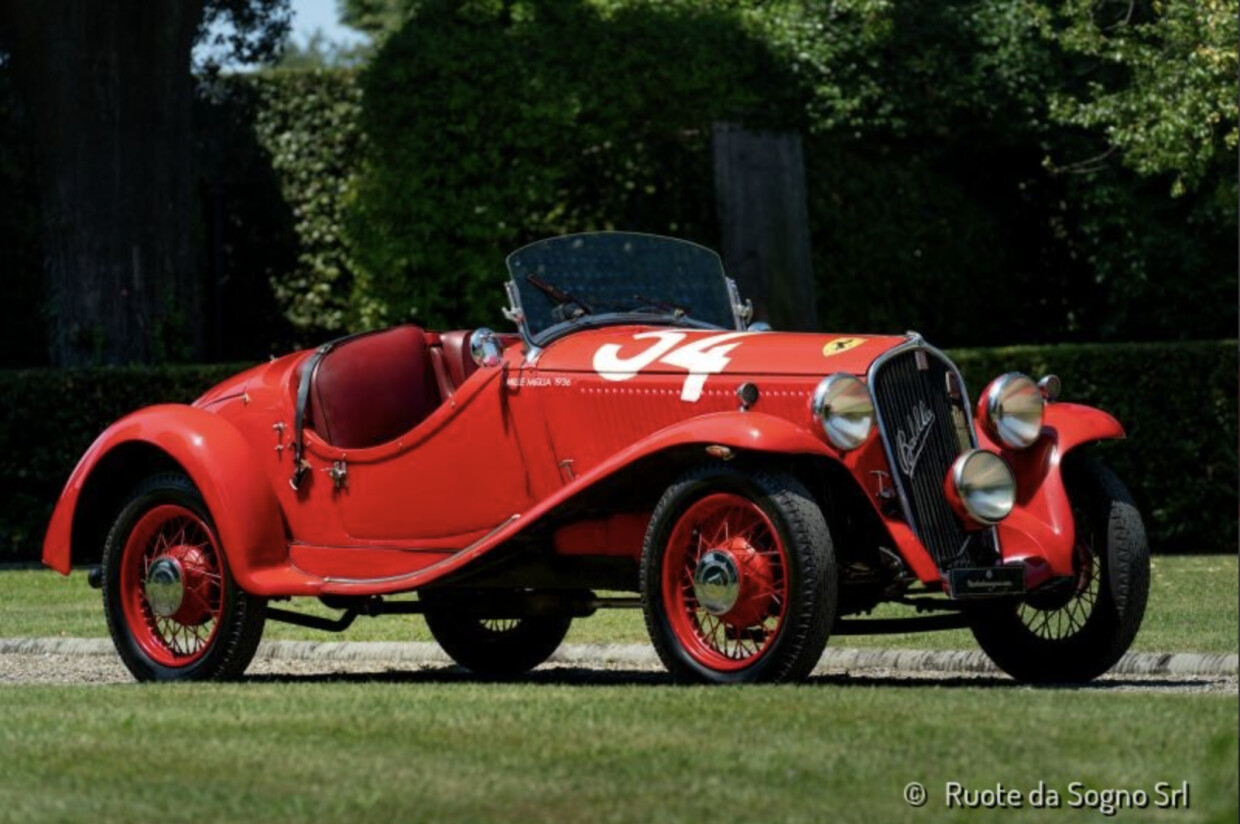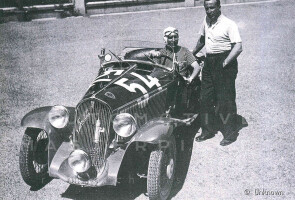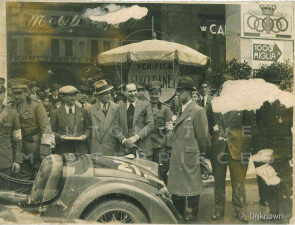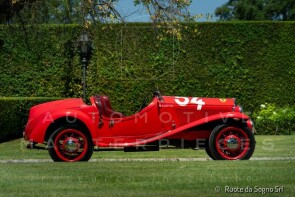
1935 Fiat 508 S Balilla Sport
ON/OFF
Why am I an Automotive Masterpiece?
G. Team cars
Scuderia Ferrari - Modena (IT)
L. Limited edition cars
no. 250 manufactured. Approximate number
Launched in 1932, the Fiat 508 Balilla quickly established itself as the car that put Italy on wheels. Developed under the technical direction of Tranquillo Zerbi, with contributions from Antonio Fessia and Dante Giacosa, the Balilla was designed to embody the regime’s ambition of creating an affordable national car. Its release aligned with the Fascist government’s push for modernization and industrial self-sufficiency, aiming to broaden access to mobility and reinforce national pride through Italian engineering. The car’s success stemmed from its low purchase price, modest operating costs, and ease of maintenance—key factors in a country still emerging from postwar economic hardship. Powered by a 995-cc inline four-cylinder side-valve engine producing around 20 hp, the Balilla offered adequate performance for its class. It featured a three-speed gearbox, rear-wheel drive, and a simple yet robust ladder-frame chassis with solid axles and leaf springs, prioritizing reliability and ease of repair. Compact, mechanically straightforward, and affordable, the Balilla became a cornerstone of Italian mass motorization. It was not only popular among private buyers, but also widely used in commercial and institutional roles—becoming a true icon of Fiat’s pre-war production and Italy’s automotive awakening.
The 508 S Balilla Sport, a competition version, was inspired by an original design by Carrozzeria Ghia. The first examples were built on the Fiat 508 Spyder chassis, suitably modified as “tipo corsa” (i.e. racing type), and still bore chassis numbers without the letter "S". In 1933, Fiat officially introduced the sporting version 508 S Balilla Sport, characterized by a lighter, elegant, and attractive body, which soon became a dream car for the younger generation. Fiat acquired the design rights from Ghia and produced two versions: the standard version, known as “Coppa d’Oro”, featured fully enclosed fenders, while the “Mille Miglia” version used lighter cycle fenders and a more lightweight chassis. The engine was also uprated from the standard 36 hp to 43 hp. The Coppa d’Oro version won the Coppa d’Oro del Littorio, from which it took its nickname, while the Mille Miglia version won the 1933 Mille Miglia in the up to 1100 cc Utility Class. Clothed in stylish open two-seater bodywork with a distinctive finned tail, the early "Spider Sport" models retained the crash gearbox of the standard cars but featured a special carburetor. Combined with a raised compression ratio of 7:1, this allowed for a maximum output of 30 hp at 4,000 rpm. In 1934, the second series 508 CS was introduced, improving on this successful formula. It adopted a four-speed synchromesh gearbox and an overhead-valve engine producing 46 hp. The final drive ratio was also modified, allowing for a top speed of 110 km/h. At the time, Siata was already producing accessories and performance parts for the Balilla, making it arguably one of the earliest car tuning companies in automotive history.
The Balilla Sport with chassis no. 508S*072038* is an example of the so-called second series, equipped with the 108 CS overhead-valve engine and a 4-speed gearbox. It was first registered in Modena on August 7, 1935, and titled to the “Federazione Provinciale Fascista Combattenti Modena.” The goal was to support, in motor racing events, an important figure of the Fascist Party: the multifaceted Augusto Zoboli, who was a painter, art historian, cultural editor, and—last but not least—the Federale (local party leader) of the Modena branch of the Fascist Party. As the necessary technical guarantor and official entrant for competition purposes, the top Modenese resource was enlisted: Scuderia Ferrari, which likely took on the task as a diplomatic and obligatory tribute to the regime. Although the Scuderia was known for its dominance with Alfa Romeo cars, it made a single exception with this Balilla. In addition to mechanical tuning, the car stood out—then as now—for two distinctive race-oriented features: supplementary air intakes with deflectors at the base of the windshield and an external quick-fill fuel cap. The Scuderia Ferrari entered the car in the Targa Abruzzo in August. Zoboli, together with Angelo Chieregato, achieved an excellent result: seventh overall and second in class. In April 1936, chassis no. 508S*072038* was entered in the Mille Miglia. The car ran on methanol, a fuel widely adopted in racing for its high octane rating and cooler combustion, which enhanced performance and reliability—especially in small-displacement engines—and was strongly promoted by the Fascist regime as a symbol of technological self-sufficiency and national pride in the context of its autarchic policies. The car itself prominently displayed slogans celebrating this choice, including markings that read “CARBURANTE SUCCEDANEO” (i.e. Surrogate Fuel), making the political and technical message visibly clear to the public. Zoboli had a secret weapon: an experienced Scuderia Ferrari co-driver, Francesco Severi. However, the entry was later amended, and at the starting line Zoboli was instead accompanied by Archimede Rosa, another seasoned driver, former OM standard-bearer, now with Scuderia Ferrari and a veteran of the Mille Miglia. They finished twenty-seventh overall, an outstanding result for a small-displacement sports car. This marks the end of the car’s known racing career. In January 1937, it changed hands and became the property of Fiat A.M. Orsi, the Modena-based Fiat dealership owned by brothers Adolfo and Marcello Orsi, who that same year acquired the historic Maserati company from its struggling founders. In October 1937, the car was sold to Lucio Pigliardi, who kept it until the end of the Second World War, in May 1945. In the postwar years, the car changed ownership and license plates several times—all of which are documented. Some owners were notable figures, such as Guillame Gillet, a leading figure in postwar French architecture, the set and costume designer Giulio Coltellacci, and Anna Maria Vianini Tolomei, future co-founder—together with her husband Nino Motta—of the Maso Thaler winery. Among its owners was also Alessandro Lenner, probably the same man known as a pioneer of amateur cinema in Rovereto and Luciano Pellegrini, boxer. The car has appeared in several articles and specialist publications and, in 2023, through the dealership Ruote da Sogno, it became part of a private collection.





